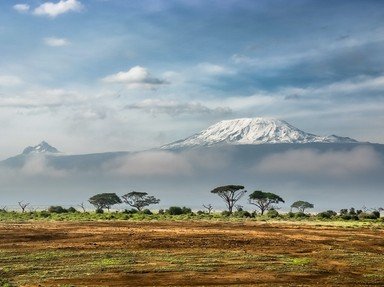Quiz Answer Key and Fun Facts
1. Algeria is the largest country in Africa. Where in Africa is Algeria located?
2. With such a large territory, it is not surprising that Algeria is home to many different ecoregions. Which of the following would you NOT expect to find there?
3. The Berbers are an ethnic group indigenous to North Africa, specifically Morocco, Algeria, Tunisia, and Libya. Whilst belonging to several nations and none, this group has its own flag comprising blue, green, and yellow horizontal bands and a Tifinagh figure. Where would you find such a figure in the Berber culture?
4. Once known as Numidia, the northern part of Algeria became a Roman province in the 1st century AD. What great Christian saint and theologian, the author of "The City of God", and known to people from Florida, was born in Numidia?
5. Which UNESCO site in Algiers was a main site of the Algerian War of Independence, acting as the epicenter of planning for the National Liberation Front?
6. The population of Algeria is 99% Muslim. Which branch of Islam, the most prevalent worldwide, do most Algerians profess?
7. "The Battle of Algiers" was a 1966 classic Italian movie that depicted a particularly brutal time in Algeria's history. Which period was depicted?
8. Relevant to 2020, Albert Camus penned a novel set in 1940s Oran, Algeria. What is its title?
9. Which of the following is considered to be the national dish of Algeria?
10. Algeria's national animal, the impossibly cute fennec fox, is distinguished by its very large ears. What is the main function of these oversized appendages, related to the fox's habitat?
Source: Author
LadyNym
This quiz was reviewed by FunTrivia editor
LeoDaVinci before going online.
Any errors found in FunTrivia content are routinely corrected through our feedback system.

